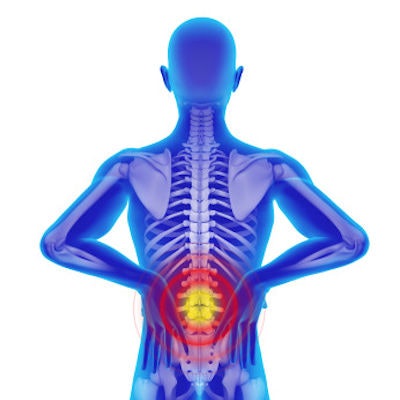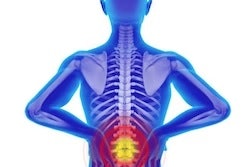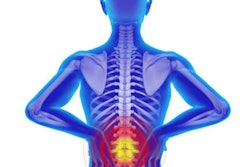
A prediction model based on radiomics and traditional imaging findings was able to differentiate acute and chronic vertebral compression fractures on CT exams, according to research published online January 6 in Academic Radiology.
A team of researchers from South Korea led by Dr. A. Yeon Kim of the University of Ulsan College of Medicine in Seoul developed a prediction model based on radiomics analysis and three spinal CT findings by radiologists. In testing, their model yielded an area under the curve (AUC) of 0.93 for distinguishing between acute and chronic vertebral compression fractures.
"Combining radiomics with radiologic findings significantly improved the performance of CT in determining the acuity of vertebral compression fractures," the authors wrote.
Although CT is helpful for detecting compression fractures, the modality "may fail to determine the acuity or chronicity of fractures because of variability in fracture morphology, inhomogeneous background bone marrow attenuation, and different degrees of bone marrow edema," the researchers wrote.
They hypothesized that CT radiomics could have potential diagnostic value in differentiating between acute and chronic benign compression fractures. They also believed that integrating radiomics with CT findings could improve CT's diagnostic performance for determining the acuity of these fractures.
To develop prediction models, the researchers first gathered a training dataset of 122 patients with 238 acute and compression fractures, including 159 acute and 79 chronic fractures. All patients had received both spine CT and MRI exams.
Two radiologists assessed three CT findings -- cortical disruption, hypoattenuating cleft or sclerotic line, and relative bone marrow attenuation -- for each fractured vertebra. Next, a least absolute shrinkage and selection operator (LASSO) regression model was used to select 14 radiomic features. These radiomics features were then utilized to produce a radiomic score for predicting the acuity of compression fractures.
Using multivariable logistic regression analysis, the researchers then built two prediction models: one based on CT findings and one that combined the radiomic score and the CT findings.
The investigators then tested the models on 32 patients with 58 fractures, including 39 acute fractures and 19 chronic fractures, assessing how well the model performed in distinguishing the acuity of compression fractures.
| Performance of radiomics model for distinguishing vertebral compression fractures | |||
| Radiomic score | Radiologic model | Integrated radiologic and radiomic model | |
| Area under the curve | 0.93 | 0.83 | 0.95 |
| Sensitivity | 89.7% | 94.9% | 94.9% |
| Specificity | 73.7% | 73.7% | 94.7% |
| Accuracy | 84.5% | 87.9% | 94.8% |
"We found that radiomics had diagnostic value in differentiating acute and chronic benign compression fractures on CT, and combining radiomics with radiologic findings significantly improved performance of CT in determining the fracture acuity compared with radiologic findings alone," the authors wrote.
The researchers noted that their method currently requires manual segmentation of the vertebral bodies in order to extract the radiomic features.
"This manual segmentation of the vertebrae is a time-consuming and labor-intensive process, especially when thin-slice CT with a large number of reconstructed images is used," the authors wrote. "We therefore believe that automated segmentation is required for wider clinical adoption of radiomics."




















